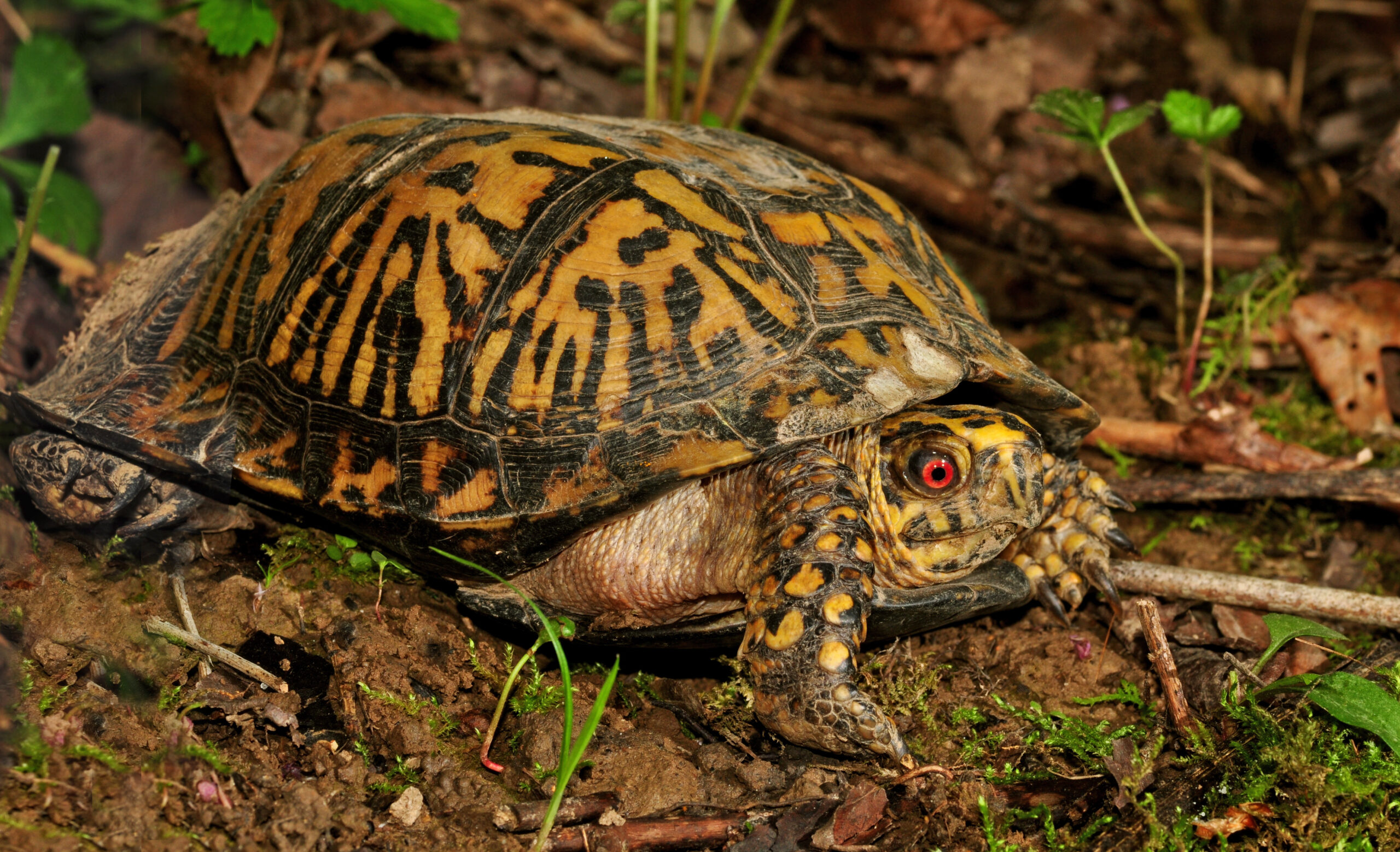STEPHANIE WEST
Naturalist at Blendon Woods Metro Park
Once upon a time, there were vast forests covering most of Ohio. As those forests were cleared, many of its inhabitants became a distant memory. Elk, cougar and wolves were forced to move on. Passenger pigeons were hunted to extinction. Some animals adapted to the human-modified landscape. Deer, raccoons and squirrels are still with us in abundance, but many others, like the quiet, unassuming and often unnoticed woodland box turtle, managed to survive only in the patchwork of preserved woods.

Box turtles are intimately tied to the forest. They can’t live under your shed like a woodchuck and can’t raid the neighborhood landscaping like deer. Unlike robins and skunks, they can’t nest on your downspout or feast from your trash. Each turtle needs its familiar patch of woodland, perhaps only as big as two football fields. It knows every inch of its home – where to find berries, where the earthworms come out in the rain, where the mushrooms sprout, where to find a frost-free spot to survive the winter and where the soil is loose enough to lay eggs.
Sometimes, roads bisect this home range, creating one of the biggest threats to turtles, being hit by cars. This gentle, retiring creature has no personal protection – no claws, no teeth, no speed. The one main defense is to close up tightly inside its hinged shell and hope its camouflage works. Sadly, even a shell made of bone is no match for vehicle traffic.
That survival strategy is its Achilles heel when it meets humans as well. What could be more adorable than a turtle closed up in its shell? Far too many turtles find themselves unexpected captives, withering in someone’s family room, after having managed to survive decades in the wild. Box turtles make poor captives, often languishing for years before succumbing to captivity-induced illness. With fewer and fewer turtles in the wild, each individual becomes critical to the genetic diversity and reproductive potential of the population. Collection by people is a serious issue for box turtles.
If you love box turtles, please don’t take one from the wild. If you see one crossing the street, move it across in the direction it was traveling.
Help Metro Parks catalog the turtles that live in our forests. If you see one, snap a picture and send it to mediagroup@metrpparks.net noting the location the turtle was spotted. Use your voice to advocate for the preservation of forest habitats – for the good of all the wild creatures that call them home.

Please build tunnels for them under a heavily trafficked road – they make these in Alaska. Ohio can adopt this practice as well. I have saved a box turtle near Walnut Park from a heavily trafficked road. Nearly gave me a heart attack with callous human drivers refusing to stop to prevent killing the turtle. I had to stop the traffic to snatch it off from the road. Please put more signs, put TV ads in local cable TV to educate others, go to schools and teach them the importance of saving box turtles, etc.
I also read that box turtles are subcuming to a turtle virus epidemic as well.
I saw two box turtles in Shafer Woods.